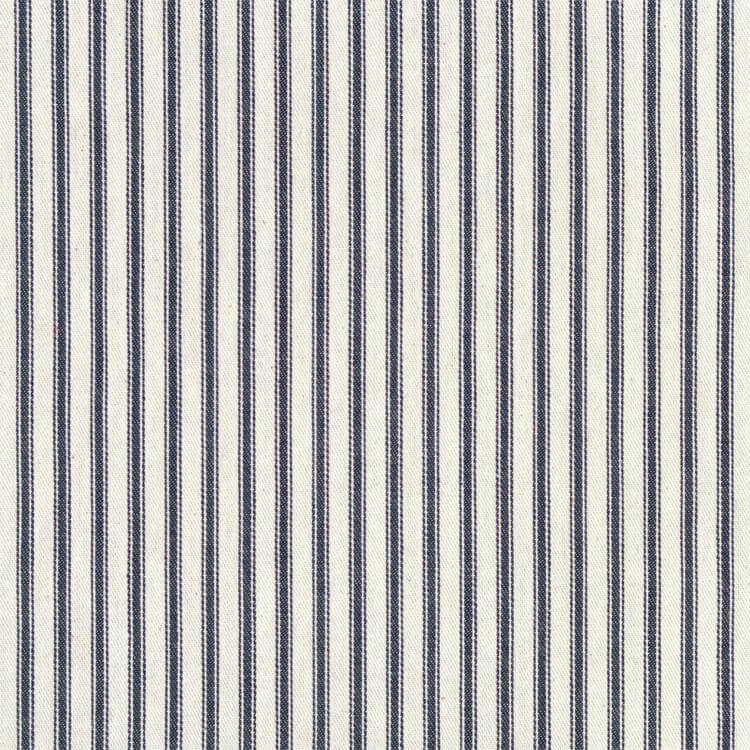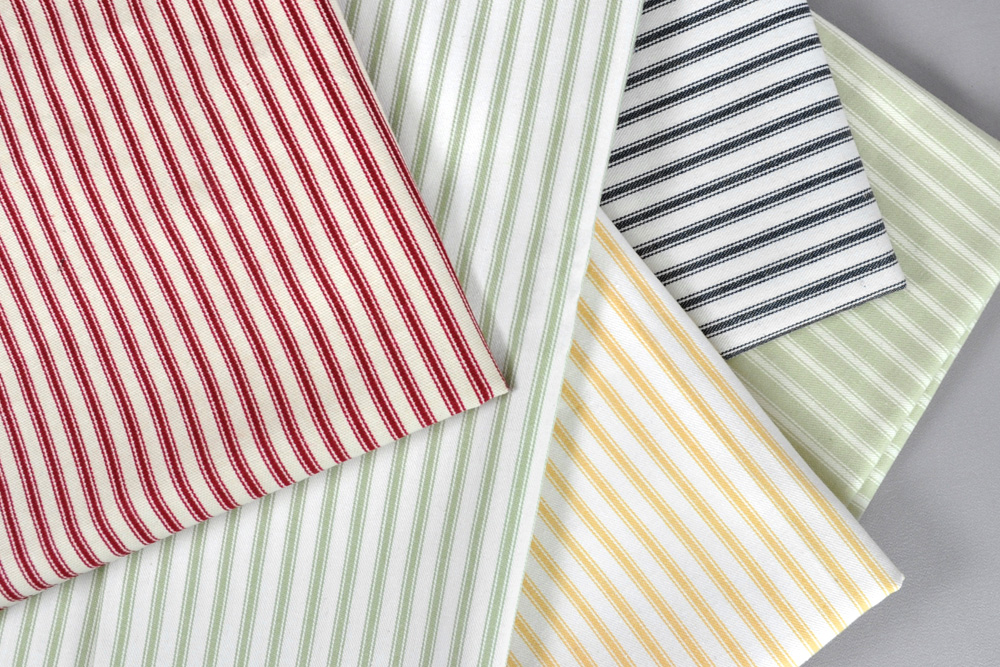Ticking Fabric Product Spotlight Video
Working with Ticking Fabric
If you have a decorative ticking print fabric, it’s easy to sew like any other medium weight décor fabric.
Featherproof ticking can be a coarse, stiff material that’s a bit challenging to cut and sew. For this reason, avoid complicated shapes with many seams and use it for large flat panels.
If hand sewing is required, use a sail needle or a curved needle and a thimble or guard to give more force to help to pierce the cloth.
Preparation and Care
Pre-washing is an option if you plan to wash your finished project as this will shrink the ticking before you start. However, dry cleaning or vacuuming are the recommended ways to keep it clean when completed due to excessive shrinkage and possible color bleeding. If you do wash it, iron while it is still damp for a smoother finish.
Cutting
Use sharp, long bladed shears to cut ticking. As it is coarse, it may be hard on the hands so take your time and pace yourself.
Pinning
If pinning this dense fabric is difficult, use chalk or a fade away pen to mark a pattern outline for cutting out rather than pinning paper pattern pieces to the fabric.
When joining pieces of fabric try using household pins which are thicker than dressmaker’s pins or try holding the layers together using flat clips, like binder clips.
Sewing
Working with ticking is similar to sewing and handling a strong, heavy-weight denim. A denim needle will penetrate the fabric. Choose a size 90/14, 100/16, or 110/18, depending on the density of the ticking.
Use a strong, heavy-duty thread and lengthen the stitch to approximately 3.5mm to work with the extra depth. If you feel your sewing machine is struggling and the needle is finding it difficult to penetrate the material, turn the fly wheel by hand to prevent damaging the motor.
Join panels with plain seams with the raw edges pressed to one side. Finish with top stitching to keep the seam flat or make traditional flat fell seams if the fabric isn’t too stiff to work with.
Ironing
Use lots of steam and press the ticking with a heavy hand to smooth out any creases. Set the iron to its highest setting.
Top Tips
- Whatever you are making, choose a simple style with a small number of seams
- Use a strong denim needle – size 90/14 or larger
- Sew with heavy duty thread
- Sew with a 3.5mm straight stitch
- Use a steam iron or a dry one with a water spray or damp cloth to press out stubborn creases
- Clean furnishings with a vacuum cleaner or water-free solvent


